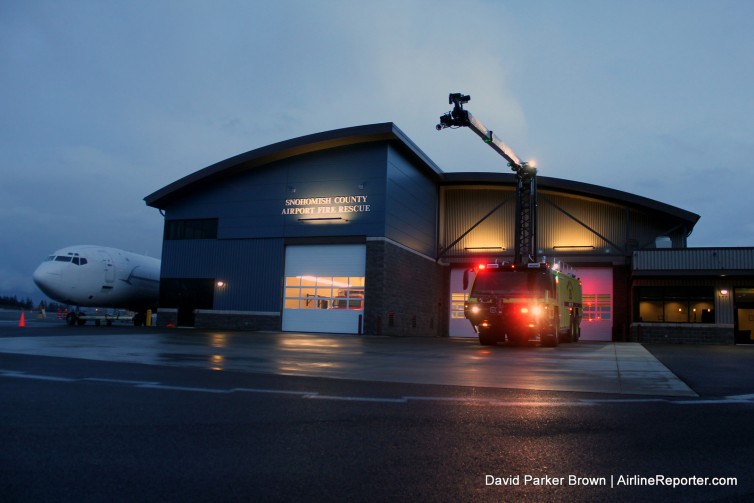
The Paine Field Fire Department, ready for action!
I think many people have a child-like persona that lives inside them. I know I do. When I had the opportunity to hang out with the fine folks at the Paine Field Fire Department, my inner seven-year-old was not only excited, but very jealous of my mid-30s self.
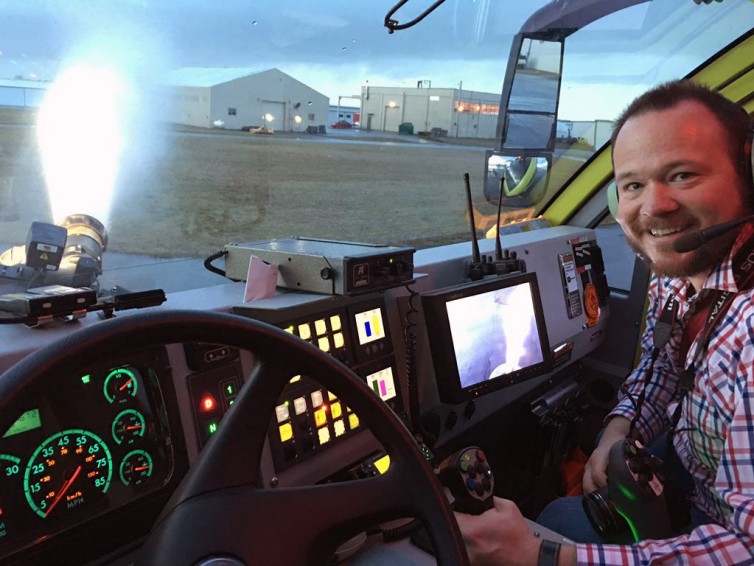
Yes. I am very much having a good time. – Photo: AirlineReporter
I think my initial pitch was to do a story about how the Paine Field Fire Department operates at the airport — and it was very professional-like. When they told me they would love to host me for a story, I couldn’t help but ask if I could turn on the lights and sirens. They told me they could arrange for much more than that. I was down!
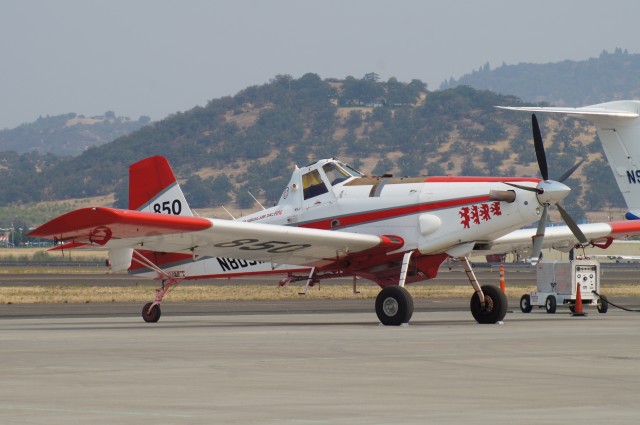
An AT-802F Air Tractor (check out the “fire words” on the nose) – Photo: Julian Cordle
Last November, I brought you an initial introduction into the world of Aerial Firefighting. That article focused on the concept, tactics and state of aerial firefighting. I promised a second look at the aircraft of Aerial Firefighting, so here we go!
First, let’s review the types of fixed-wing aerial firefighting aircraft and the associated designations and acronyms.
SEATs (Single Engine Air Tankers) are short-range, small, one-person aircraft with less than approximately 1,000 gallons of usable retardant capacity. The most well-known example here is an AT-802F Air Tractor and the ’œFire Boss’, which is a model AT-802F fitted with floats.
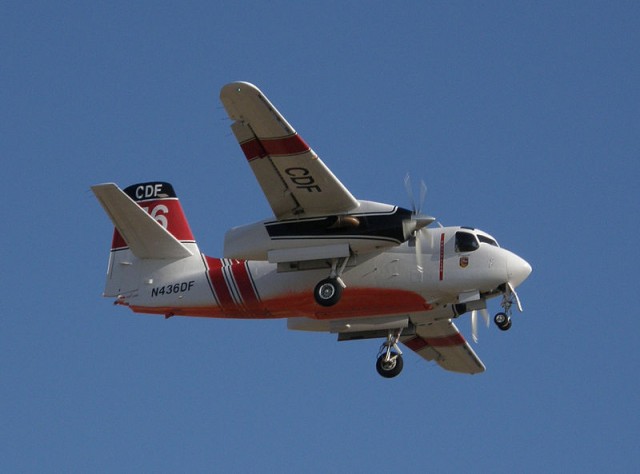
A Grumman S-2T converted to fire fighting duty – Photo: Alan Radecki | WikiCommons
Next we have the Large Air Tankers (LATs): of Type III, II, and I. Type III air tankers can dispense approximately 1,200 gallons per drop. The best example in this class could be the Grumman S-2T, which are re-engined Grumman S-2 ’œTracker’ Navy patrol aircraft. CalFire currently has 20+ of these in service.
Type II tankers include such interesting aircraft as the purpose-built Canadair CL-215 ’œSuperScooper’, with high, oversized wings and v-hull for scooping up up to 1,250 gallons of water to deliver to a fire.
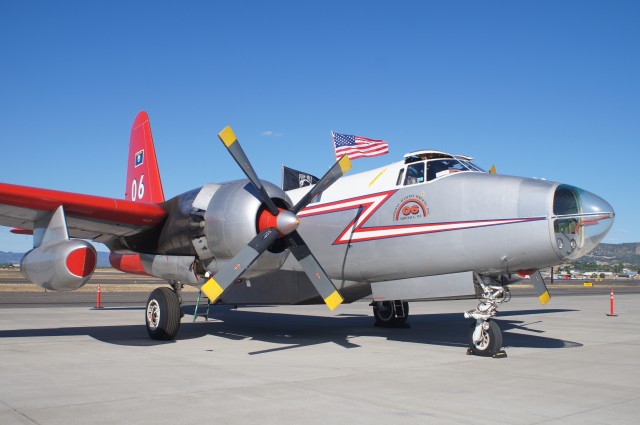
06 Lockheed P2V fire-fighting aircraft – Photo: Julian Cordle
Fall brings cool, wet weather, which serves as a huge relief to areas devastated by the 2014 US wildfire season. In the last sixty days, a number of high-profile tragedies have highlighted the dangers of wildfires. In September, the town of Weed, California was nearly wiped out by the vicious Boles Fire, which destroyed over 150 homes and buildings. Just a few weeks ago, CalFire Pilot Craig Hunt was killed when his S-2 tanker crashed while fighting the Dog Rock Fire near Yosemite National Park.
In the spirit of respect and appreciation for the efforts of all forest firefighters, aerial and “ground-pounders” alike, AirlineReporter offers this two-part series on Aerial Firefighting.
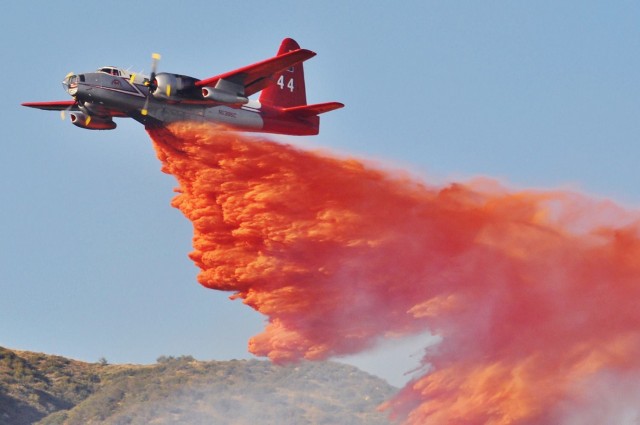
P2V Neptune fire tanker dropping borate fire retardant on the mountainside in an effort to contain a wildfire – Photo: Jeremy Ulloa
The 2014 fire season began with a bang, as an early season fire in Alaska consumed nearly 200,000 acres before a badly needed weather system put it to rest. About the same time, a vicious collection of fires raged through heavily populated areas of Southern California. All of this took place before we had even seen the first day of June.





